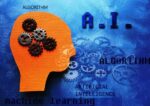
Auto-generated or artificial-intelligence-generated source code (collectively, “Non-human-authored code” (“NHA” source code) can have a major impact on a software expert’s analysis and findings. With the software development industry continuing to move in the direction of including artificial intelligence in numerous products and services, it is worth exploring how the NHA source code typically needs to be addressed in a copyright or trade secret dispute.
Click the Play Button to hear an AI-generated audiocast of this article.
In general, software copyright infringement law provides some applicable bright-line rules that result in excluding NHA code from expert analysis. However, the same assertion cannot be made for trade secret law, which has yet to directly address the implications of including NHA source code in expert analysis.
In copyright infringement matters generally, the U.S. Copyright Office has explicitly limited copyrights to human beings and current case law has reached similar conclusions.
Further, in software copyright infringement matters, where NHA source code does not neatly fall into categories of materials experts typically exclude under the abstraction, filtration, comparison (“AFC”) test – such as merger, scènes à faire, or third-party code – the U.S. Copyright Office’s limitations imply that NHA source code would also be excluded under an AFC test.
Thus, an expert attempting to determine the extent of potential copying in an allegedly-copyright-infringing software product should exclude NHA source code.
The validity of analyzing NHA source code in software trade secret misappropriation matters is less clear. For example, there is currently no bright-line rule requiring the exclusion of NHA source code when investigating claims of trade secret misappropriation.
In fact, an alleged trade secret may include NHA source code if it satisfies the other criteria for protection.
_______________________________________________________________________________________________________
See Compendium of the U.S. Copyright Office Practices § 306 (3d Ed.) (“The U.S. Copyright Office will register an original work of authorship, provided that the work was created by a human being.” (emphasis added)); see also Copyright Office, Copyright Registration Guidance: Works Containing Material Generated by Artificial Intelligence, 37 CFR § 202, available at: https://fingfx.thomsonreuters.com/gfx/legaldocs/byvrlmjlzve/AI%20COPYRIGHT%20notice.pdf (clarifying that copyrighted materials must be the product of human creativity); see also, e.g., Naruto v. Slater, Case No. 15-cv-04324-WHO (N.D. Cal. Jan. 28, 2016) (holding that Naruto, a six-year old crested macaque, is not an ‘author’ within the meaning of the Copyright Act).
_________________________________________________________________________________________________________
For example, a party may claim that its alleged trade secret material is composed of a proprietary function or design that either incorporates NHA source code or uses values generated by it. In this scenario excluding the NHA source code is improper.
On the other hand, if the entire claimed trade secret materials are composed of NHA source code, it’s less clear whether NHA source code should be considered a trade secret.
For example, the NHA source code may be generally known or readily ascertainable by a third party that has provided identical inputs into an NHA source code generator to produce identical results.
Further, if an NHA source-code generator could generate the claimed trade secret given identical inputs, it’s unclear if such source code would be confidential. In this scenario, not excluding the generally known or readily ascertainable NHA source code may be improper.
Similarly, if the independent economic value of the claimed trade secret material is called into question, it’s also unclear whether NHA source code should be included or excluded.
For example, the value of NHA source code may not be readily apparent without considering the time and expense of developing the precise inputs provided to a NHA source-code generator to produce the specific results that are claimed as trade secrets. Such considerations are likely to be highly fact-dependent; there’s currently little direct guidance from the courts on these particular issues.
In each of the given scenarios above, understanding how the NHA source code fits into the claimed trade secret is key to the expert’s findings. Depending on the situation, including or excluding NHA source code or NHA-generated values could lead to incorrect or incomplete results.
As this article demonstrates, copyright infringement and trade secret misappropriation matters both follow a general format of first identifying the potentially protectable material, reducing that scope to focus the analysis on what is protectable, and comparing what remains.
In software copyright infringement matters, the AFC test provides a set of formal guidelines on one way to undertake this analysis. However, in trade secret misappropriation analysis, the methodology is much less prescribed and dependent upon the ultimate question being assessed.
The recent rise in popularity and accessibility of artificial intelligence platforms suggests that these issues will appear more frequently in the near future.
DisputeSoft’s experts have the foundational knowledge and skill to identify these types of issues and the ways in which they may be assessed in various matters.
About DisputeSoft
DisputeSoft has served as trusted software failure experts on over 425 software project failure and IT failure disputes both at the pre-litigation and actual litigation stages. DisputeSoft’s proven software experts and trade secret experts deliver the most educated independent, objective and defensible analysis, opinions and testimony in any complex software disputes, software copyright infringement cases or intellectual property disputes.
Contact us for free consultation to see how we can help enlighten and improve your case.




